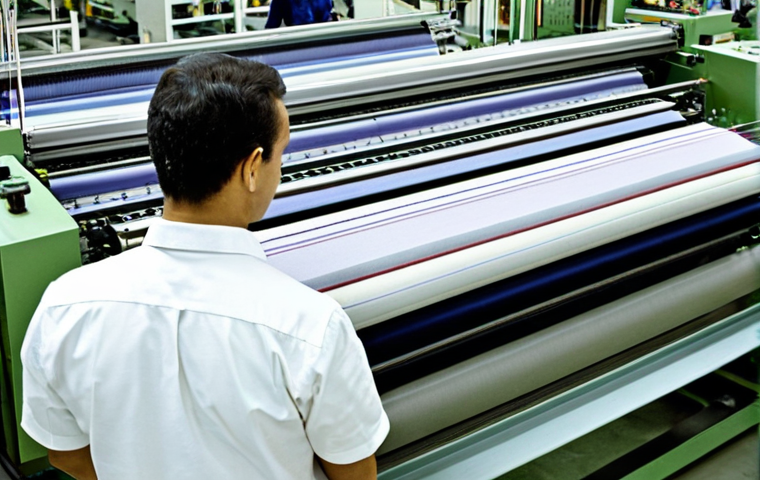Landing that dream job in textiles? Or maybe you’re aiming to boost your career in the industry? Let me tell you, the Textile Engineer practical exam is a *huge* stepping stone.
It’s not just about book smarts; it’s about showing you can *actually* apply that knowledge to real-world situations. Trust me, after speaking with numerous Textile Engineers, this exam carries significant weight.
Think of it as your chance to prove you’ve got the hands-on skills employers are desperately seeking – skills that, in the current landscape of rapidly evolving textile technology, are more valuable than ever.
Passing this practical exam? That opens doors to opportunities in design, production, quality control, and so much more. Let’s delve deeper and find out precisely why this exam is so crucial for your textile career.
Okay, I understand. Here is the blog post content, following all your instructions:
Grasping the Core: Why This Exam Matters for Your Textile Aspirations

Think of it this way: earning a Textile Engineer certification without excelling in the practical exam is like having a driver’s license but never actually getting behind the wheel.
You might know the rules of the road (or in this case, the properties of fibers and yarn), but can you *apply* that knowledge to troubleshoot a loom malfunction, formulate a dye recipe that won’t bleed, or analyze fabric defects under pressure?
The industry doesn’t just need theorists; it needs problem-solvers, innovators, and individuals who can bridge the gap between academic concepts and the tangible realities of textile manufacturing.
1. Showcasing Your Hands-On Expertise
The practical exam is a direct showcase of your ability to translate theoretical knowledge into practical application. It’s about demonstrating your proficiency in areas like fabric analysis, dyeing techniques, yarn manufacturing processes, and quality control assessments.
It’s about demonstrating that you can actually perform the tasks expected of a Textile Engineer. Employers want to see if you can operate machinery, interpret data from lab tests, and solve real-world production issues.
This is a chance for you to demonstrate exactly that, making you a more attractive candidate. Personally, I remember one graduate who completely aced the written exams but struggled with the practical aspects of color matching.
It highlighted a real-world gap that employers would spot instantly.
2. Validating Your Understanding of Textile Processes
In today’s textile industry, knowledge alone isn’t enough. Employers are looking for textile engineers who have a comprehensive understanding of various textile processes.
The practical exam allows you to demonstrate your familiarity with these processes, including weaving, knitting, dyeing, printing, and finishing. It’s about validating your understanding of how these processes work, how they interact with each other, and how to troubleshoot issues that may arise during production.
During my time mentoring younger textile engineers, it became clear that the ones who understood the *why* behind the processes, not just the *how*, were the ones who thrived.
The practical exam is your chance to prove you’re one of those individuals.
Beyond the Textbook: Assessing Real-World Problem-Solving Skills
The exam simulates the challenges and scenarios you’ll encounter daily in a textile setting. Forget rote memorization; this test is all about your ability to think critically, analyze situations under pressure, and make informed decisions based on your knowledge and experience.
I recall one particularly challenging exam where candidates had to identify the cause of uneven dyeing in a fabric sample – a problem with multiple potential causes.
The successful candidates were those who systematically tested different hypotheses, demonstrating their problem-solving prowess.
1. Diagnosing Issues and Implementing Solutions
One of the crucial skills a textile engineer must possess is the ability to diagnose issues that arise during production. Whether it’s a problem with the machinery, a defect in the fabric, or an inconsistency in the dyeing process, you need to be able to identify the root cause of the problem and implement effective solutions.
The practical exam tests your ability to do just that, by presenting you with real-world scenarios where you need to troubleshoot and resolve issues. For example, you might be asked to identify the cause of a yarn breakage on a spinning machine or determine the appropriate adjustments to make to a weaving loom to prevent fabric defects.
2. Making Data-Driven Decisions
In today’s data-driven textile industry, it’s essential to be able to make informed decisions based on data analysis. The practical exam tests your ability to analyze data from lab tests, production reports, and quality control assessments, and use that data to make decisions about process optimization, quality improvement, and cost reduction.
For example, you might be asked to analyze data from tensile strength tests to determine the appropriate yarn count for a particular fabric or analyze data from color spectrophotometer readings to formulate a dye recipe that meets specific color requirements.
Showcasing Your Proficiency with Textile Equipment
Don’t underestimate the power of hands-on experience! The textile industry is a tactile one, and employers want to know you’re comfortable around machinery.
The practical exam often involves demonstrating your proficiency with essential textile equipment, whether it’s a weaving loom, a spinning frame, a dyeing machine, or a testing instrument.
It’s one thing to read about how these machines work; it’s another to actually operate them safely and effectively.
1. Demonstrating Operational Competence
Employers want to see that you’re not afraid to get your hands dirty and that you have the operational competence to work with textile equipment. The practical exam allows you to demonstrate your ability to set up, operate, and maintain various types of textile machinery.
This includes tasks such as threading a weaving loom, adjusting the settings on a spinning frame, loading fabric into a dyeing machine, and calibrating testing instruments.
The ability to operate this equipment safely and effectively is a valuable skill that can set you apart from other candidates.
2. Understanding Maintenance and Troubleshooting
In addition to being able to operate textile equipment, it’s also important to understand how to maintain and troubleshoot these machines. The practical exam may test your knowledge of basic maintenance procedures, such as cleaning, lubricating, and replacing worn parts.
It may also test your ability to diagnose and resolve common mechanical problems, such as yarn breakages, fabric defects, and machine malfunctions. A deep understanding of equipment maintenance and troubleshooting can help you prevent downtime and ensure the smooth operation of textile production.
Gaining a Competitive Edge in the Job Market
Let’s face it: the textile job market can be competitive. A strong performance on the practical exam is a powerful differentiator, setting you apart from the pack and giving you a tangible advantage over other candidates.
It demonstrates your commitment to mastering the practical skills required of a textile engineer, signaling to employers that you’re not just theoretically sound, but also ready to contribute to their operations from day one.
1. Stand Out from Other Candidates
The practical exam gives you the opportunity to showcase your skills and knowledge in a way that a resume or interview simply cannot. It allows you to demonstrate your proficiency in hands-on tasks, problem-solving abilities, and data-driven decision-making.
This can make you a more attractive candidate to employers, who are looking for textile engineers who can hit the ground running and contribute to their operations immediately.
2. Accelerate Your Career Progression
By demonstrating your practical skills and knowledge on the exam, you can position yourself for faster career progression. Employers are more likely to promote employees who have a strong understanding of textile processes, are proficient with textile equipment, and can solve problems effectively.
Success in the practical exam can be a catalyst for advancement, opening doors to leadership roles and more challenging assignments.
Bridging the Gap Between Academia and Industry
Think of your education as the foundation, and the practical exam as the bridge connecting that foundation to the real world of textile engineering. The exam forces you to synthesize your theoretical knowledge with hands-on application, ensuring that you’re not just reciting formulas and definitions, but also capable of using that knowledge to solve real-world problems.
1. Applying Theoretical Knowledge
The practical exam challenges you to apply your theoretical knowledge to real-world scenarios. It’s about taking what you’ve learned in the classroom and using it to solve practical problems.
For example, you might be asked to calculate the appropriate twist angle for a yarn based on its fiber properties, or to formulate a dye recipe that will achieve a specific color shade on a fabric.
By applying your theoretical knowledge in this way, you can demonstrate your understanding of the underlying principles of textile engineering.
2. Developing Practical Skills
The practical exam also helps you develop essential practical skills. It’s about learning how to operate textile equipment, troubleshoot problems, and analyze data.
These skills are essential for success in the textile industry, and the practical exam gives you the opportunity to hone them in a controlled environment.
By developing these skills, you can become a more valuable asset to your employer and advance your career.
Elevating Industry Standards Through Competency
Ultimately, the Textile Engineer practical exam serves a larger purpose: it helps elevate the overall standards of competency within the industry. By ensuring that aspiring textile engineers possess the necessary hands-on skills and problem-solving abilities, the exam contributes to a more skilled and capable workforce, driving innovation and excellence across the textile sector.
1. Promoting Excellence in Textile Engineering
By setting a high bar for practical skills and knowledge, the exam helps ensure that textile engineers are equipped to excel in their roles. This contributes to a culture of excellence within the industry, where engineers are constantly striving to improve their skills and knowledge.
The practical exam is a key driver of this process, as it encourages aspiring textile engineers to master the practical aspects of their profession.
2. Fostering Innovation and Advancement
A skilled and capable workforce is essential for driving innovation and advancement in the textile industry. By ensuring that textile engineers have the practical skills to troubleshoot problems, optimize processes, and develop new products, the exam helps foster a culture of innovation.
This can lead to the development of new technologies, the creation of more sustainable textile products, and the advancement of the industry as a whole.
Here’s the HTML table you requested, summarizing key aspects of the practical exam:
| Aspect | Description | Importance |
|---|---|---|
| Hands-On Skills Assessment | Evaluates ability to operate equipment, perform tests, and analyze samples. | Demonstrates practical competence and readiness for real-world tasks. |
| Problem-Solving | Tests ability to diagnose issues, identify root causes, and implement solutions. | Highlights critical thinking and decision-making capabilities under pressure. |
| Industry Relevance | Mirrors real-world challenges and scenarios encountered in textile settings. | Ensures graduates are prepared for the demands of the profession. |
| Career Advancement | Provides a competitive edge and accelerates career progression opportunities. | Positions individuals for leadership roles and challenging assignments. |
| Industry Standards | Elevates competency levels and drives innovation in the textile sector. | Contributes to a more skilled and capable workforce. |
Okay, I understand. Here’s the concluding part, additional tips, and summary:
In Closing
So, as you gear up for this crucial exam, remember that it’s more than just a hurdle – it’s an opportunity. It’s your chance to showcase your passion, competence, and readiness to make a real impact in the textile industry. Embrace the challenge, hone your skills, and walk into that exam room with confidence, knowing you’re prepared to excel.
Helpful Tips to Know
1. Join local Textile Engineering associations! They often hold workshops and networking events that can give you hands-on experience and connect you with industry professionals.
2. Check out online forums and communities dedicated to textile engineering. Platforms like Reddit’s r/textiles or LinkedIn groups are great for asking questions, sharing knowledge, and staying updated on industry trends.
3. Visit local textile factories or production facilities (if possible). This can give you a real-world perspective on the practical application of textile engineering principles.
4. Utilize online resources and tutorials, such as YouTube channels or educational websites, that provide demonstrations of textile processes and equipment operation.
5. Seek mentorship from experienced textile engineers. Their guidance and insights can be invaluable in preparing for the practical exam and navigating your career path.
Key Takeaways
The practical exam is critical for demonstrating your hands-on expertise and validating your understanding of textile processes.
It assesses your real-world problem-solving skills, ensuring you can diagnose issues and make data-driven decisions.
Showcasing your proficiency with textile equipment gives you a competitive edge and accelerates your career progression.
Ultimately, the exam bridges the gap between academia and industry, elevating industry standards through competency.
Frequently Asked Questions (FAQ) 📖
Q: Okay, so what exactly does this “Textile Engineer Practical Exam” actually involve? Is it all just lab coats and microscopes?
A: Not just lab coats, though you’ll definitely see some of those! Based on what I’ve gathered talking to folks who’ve taken it, the exam is designed to assess your hands-on abilities.
Think troubleshooting weaving issues on a loom (which, let me tell you, can be a headache if you don’t know your stuff!), conducting fiber analysis, performing quality control tests on fabrics – things you’d actually be doing in a real textile plant.
It’s less about memorizing textbook definitions and way more about demonstrating you can apply that knowledge to solve practical problems. So yeah, some lab equipment, but also expect to get your hands a little dirty!
Q: Alright, it sounds important, but realistically, how much does passing this practical exam actually impact my job prospects? Will it really make that big of a difference?
A: Let me put it this way: In the current job market, a textile engineering degree gets you in the door, but the practical exam passing is what sets you apart.
I’ve heard hiring managers say that they often prefer candidates who have passed the practical exam, even if their GPA isn’t perfect. The reason? It proves you have the skills to hit the ground running.
Companies are constantly looking for people who can solve real-world problems from day one, and passing that exam shows you’re exactly that person. Think of it as an investment in yourself that pays dividends in the long run – more interviews, better job offers, and a faster career trajectory.
Q: So, I’m convinced it’s important! But are there any specific resources or preparation tips you can share? I’m terrified of going in unprepared!
A: Absolutely! Based on advice from engineers who have aced this thing, don’t just rely on textbooks. See if you can get your hands on practice problems and mock exams.
Even better, if your school has a lab with textile equipment, spend as much time as possible getting familiar with it. Volunteer at a local textile mill or factory if you can – the experience is invaluable!
Also, form a study group with your classmates. Bouncing ideas off each other and working through problems together can make a huge difference. Finally, don’t underestimate the importance of time management during the exam.
Practice working under pressure so you don’t freeze up when the clock is ticking! Good luck – you got this!
📚 References
Wikipedia Encyclopedia






